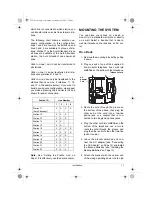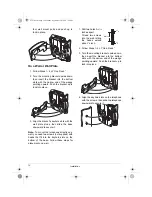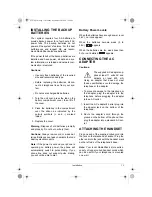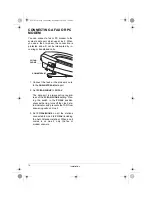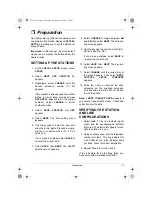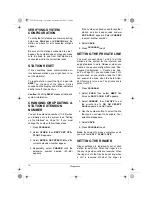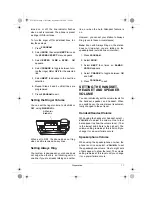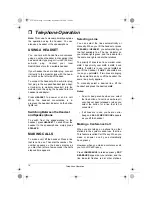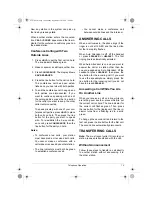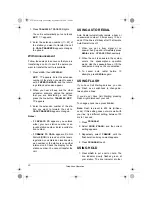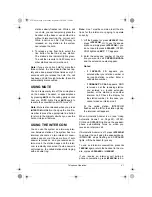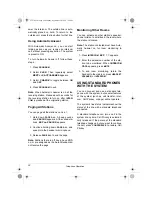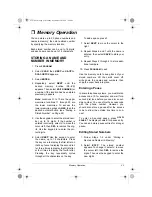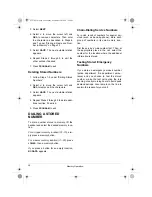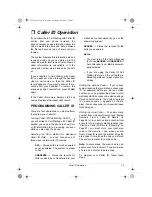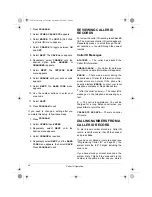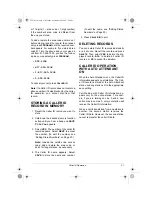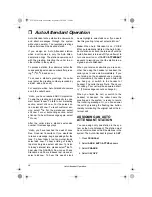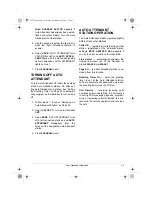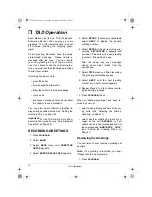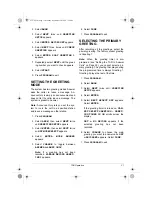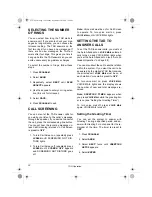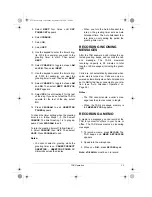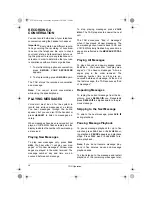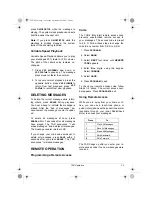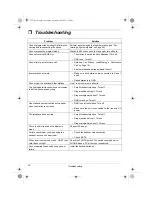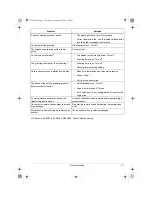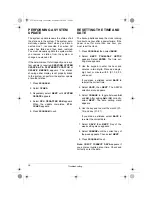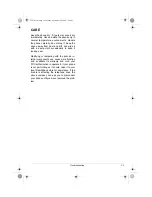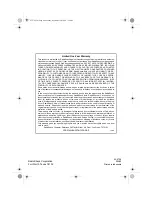
25
Caller ID Operation
ˆ
Caller ID Operation
If you subscribe to Call Waiting with Caller ID
service from your phone company, the
phone company sends information about the
call, as well as the time and date, between
the first and second rings of every call you
receive.
The system displays this information when it
receives a call, and you can store up to 140
caller records for later review. It also shows if
caller information is unavailable or if the
name and number were blocked by the call-
er.
If you subscribe to Call Waiting with Caller
ID, you will hear a tone through the handset
when a call comes in, then the Caller ID
record appears. If you want to answer the in-
coming call, press
FLASH
. To resume the
previous phone conversation, press
FLASH
again.
If the Caller ID memory becomes full, any
new call replaces the oldest call's record.
PROGRAMMING CALLER ID
There are four operations you must perform
to program your Caller ID.
Turning Caller ID/Call Waiting On/Off — if
you subscribe to Call Waiting with Caller ID
service, you can set the phone to show Call-
er ID information for an incoming call even
while you are using the phone.
Selecting the Save Method for Received
Caller ID Data — you can choose one of
three ways to store caller ID records:
ALL
— Stores all the records, answered
or not answered. The system is preset
to ALL.
UNANSWER
— Stores the records for
calls received by or transferred to your
station but not answered (by you or the
answering system).
ANSWER
— Stores the records for the
calls you answered.
Notes:
• You must turn off the Auto Attendant
to choose
ANSWER
or
UNANSWER
. If
Auto Attendant is on,
ALL
is automat-
ically selected.
• If you are using the Caller ID Call
Waiting feature, all the call data are
stored regardless of which option you
choose.
Setting the Access Code — If your phone
system requires that you dial an access code
(9, for example) before you dial an outside
number, you can program the phone to auto-
matically dial the access code when calling a
stored caller ID record. The system is preset
to no access code (
–
appears on the dis-
play). If an access code is not required, leave
this setting as
–
.
Setting the Area Code — To quickly dial a
number from a Caller ID record (see “Dialing
Numbers From a Caller ID Record” on
Page 26) or to correctly store a number from
a record into a memory dialing location (see
“Storing a Caller ID Record in Memory” on
Page 27), you must store your local area
code in the memory. Then, when you dial
from a Caller ID record, the system skips the
area code if it matches the one you stored.
The system is preset to no area code.
Note: In some areas, the area code is nec-
essary even for a local call. If you live in such
an area, do not enter the area code.
To program your Caller ID, follow these
steps.
43-5708.fm Page 25 Monday, September 18, 2000 7:56 AM

